Netleaf Hackberry (Celtis laevigata Willd.)
Sugar Berry (Celtis reticulata Torr.) Granjeño/Desert Hackberry (Celtis pallida Torr.) Ulmaceae (Elm Family)
Three species of hackberry grow on the Texas coast. Netleaf hackberry and sugarberry grow primarily along streams and swales. The third species, granjeño (desert hackberry), grows on uplands such as clay dunes or on prairie margins.
Both sugarberry and netleaf hackberry produce an edible fruit and strong, flexible wood that were utilized by the native populations. Each tree produces a slightly different fruit. The desert hackberry fruit is a small, fleshy drupe with a crunchy, hollow, calcareous stone (seed). They are bright orange, juicy, and tart, if you don't mind the crunchy center. Both netleaf hackberry and sugarberry produce a reddish-to-black fruit with a smaller, mealy flesh wrapped around a calcareous stone that is not hollow and much harder than granjeño. The Plains Apache name for sugarberry, for example, translates “hard seed” (Jordan 2008). The sugarberry fruit is somewhat sweeter and fleshier than that of netleaf hackberry.
Archeology. Because hackberry seeds are calcareous, they are often preserved in soils. It is often difficult to tell if hackberry seeds from archeological sites are relatively recent and part of the natural seed rain or are prehistoric in origin and were brought in by native peoples.
Because few coastal excavations have been conducted and preservation is poor I am not aware of any reliable records of hackberry from coastal sites. A single occurrence of possible hackberry seed in the deposits of the Hinojosa site, a Late Prehistoric Toyah Phase site in Jim Wells County, is the best direct evidence we have for eating this fruit in a site near the coast (Black 1986), but this is about 70 km from the coast. However, with the accelerating pace of excavation and analysis and the widespread use of flotation recovery methods hackberry is bound to turn up in archeological sites from the region.
Discoveries from archeological sites in other regions as well as in human coprolites (dried feces) confirm a long history of human use. Desert hackberry seeds were recovered by the thousands from Hinds Cave in southwest Texas, and are clearly visible in dozens of rockshelter sites in the Lower Pecos (Dering 1979; 2008; Irving 1966). A single hackberry seed was noted in the limited plant collections made from the Kyle Shelter, a Late Prehistoric Toyah Phase site (Jelks 1962). Hackberry seeds were recovered from the Vargas site on the southwestern Edwards Plateau (Quigg et al. 2005).
Archeologists have identified hackberry wood in samples from the Hinojosa site as well as two sites in Maverick County near Eagle Pass (Black 1986; Dering 2005).
Food. Hackberry fruits are rich in sugar and calcium. When pounded into a pulp, they can be easily dried or mixed with other foods. Desert hackberry fruit is quite nutritious, containing up to 20% crude protein, as well as phosphorous, and calcium (Everitt and Alaniz 1981).
I have not yet located specific ethnographic or ethnohistorical references to the use of hackberry in Texas; so all of the following references are from groups in Oklahoma, northwestern Mexico and the southwestern United States.
Most of the uses for sugarberry or netleaf hackberry usually involve some processing. Most of the groups using this fruit pounded it, which infers the use of a mortar and pestle. They often mixed the resulting mush with water or with other meats or plant foods such as parched corn. These groups include the Comanche, Yavapai, Chiricahua or Mescalero Apache.
The Plains Apache of southern Oklahoma valued the sugarberry and netleaf hackberry fruit as a source of sweetness before the days of the Euro-American introduced diet. They used the fruit to flavor dried meats, and as a snack food. They would also pound the entire fruit and mix it with tallow or kidney fat to make a confection (Jordan 2008). The Dakota used the fruit of Celtis occidentalis to flavor meats, pounding them into a fine meal before mixing it with the meat (Gilmore 1977). Several other Plains Indians living north of Texas, including the Kiowa, and Pawnee processed another closely Celtis occidentalis in the same manner (Castetter and Opler 1936; Gifford 1936; Gilmore 1977). The Comanche beat sugarberry fruit into a pulp, rolled it into balls with some fat, and roasted the resulting mix over a fire (Carlson et al. 1942). The Chiricahua and Mescalero and the Dakota dried the fruit for future use (Castetter and Opler; Gilmore 1977).
The Onavas Pima and the Seri consumed the fresh fruits of desert hackberry (Felger and Moser 1991; Pennington 1980). There is no record of processing desert hackberry fruits into a storable form, or including it in other food preparations. The fruit usually ripens in late summer, early fall.
Other Uses. The hard and flexible wood of desert hackberry wood was utilized for various implements and in some cases as firewood. The Seri made cradle boards from the wood. Hackberry wood was also favored for making bows (Felger and Moser 1991). The Navajo boiled leaves and branches of netleaf hackberry to make a reddish/brown dye for wool. The Tewa used hackberry wood for tool handles. The Papago fashioned sandals from the bark of hackberries (Castetter and Underhill 1935; Elmore 1944; Robbins et al. 1916). The Plains Apache used sugarberry wood for fuel, although its quality was questioned by one informant (Jordan 2008)
References
Black, Stephen L.
1986 The Clemente and Herminia Hinojosa Site, 41JW8: A Toyah Horizon Campsite in Southern Texas. Center for Archaeological Research, Special Report No. 18. The University of Texas at San Antonio. San Antonio, Texas.
Carlson, Gustav G. and Volney H. Jones
1940 Some Notes on Uses of Plants by the Comanche Indians. Papers of the Michigan Academy of Science, Arts, and Letters 25:517-542.
Castetter Edward F., and Morris Opler
1936 The Ethnobiology of the Chiricahua and Mescalero Apache. A. The Use of Plants for Foods, Beverages, and Narcotics. Ethnobiological Studies in the American Southwest. Vol. III. The University of New Mexico Bulletin, Biological Series 4(5). Albuquerque.
Castetter Edward F., and Ruth Underhill
1935 The Ethnobiology of the Papago Indians. Ethnobiological Studies in the American Southwest. Vol. II. The University of New Mexico Bulletin, Biological Series 4(3). Albuquerque.
Dering, J. Phil
2008 Late Prehistoric Subsistence Economy on the Edwards Plateau. Plains Anthropologist 53 (205):59-78).
Everitt J.H. and M.A. Alaniz
1981. Nutrient Content of Cactus and Woody Plant Fruits Eaten by Wildlife in South Texas. Southwestern Naturalist 26:301-305.
Elmore, F. H.
1944 Ethnobotany of the Navajo. University of New Mexico Bulletin. Monograph Series 1(7). University of New Mexico Press. Albuquerque.
Felger, R.S., and Mary B. Moser
People of the Desert and Sea. University of Arizona Press. Tucson.
Gifford, E. W.
1936 Northeastern and Western Yavapai. University of California Publications in American Archaeology and Ethnography. 34:247-354.
Gilmore, Melvin R.
1977 Uses of Plants by the Indians of the Missouri River Region. University of Nebraska Press. Lincoln. [Reprint of original Thirty-third Annual Report of the Bureau of American Ethnology, Smithsonian Institution, Washington, D.C. 1919].
Jelks, Edward B.
1962 The Kyle Site: A Stratified Central Texas Aspect Site in Hill County, Texas. Archaeology Series 5. Department of Anthropology, The University of Texas at Austin.
Jordan, Julia A.
2008 Plains Apache Ethnobotany. University of Oklahoma Press. Norman, Oklahoma.
Pennington, Campbell
1980. The Pima Bajo of Central Sonora, Mexico. Vol. I. University of Utah Press. Salt Lake City.
Quigg, J. Michael, J. D. Owens, G.D. Smith, and M. Cody
2005 The Varga Site: A Multicomponent, Stratified Campsite in the Canyonlands of Edwards County, Texas [Draft]. Technical Report No. 35319. TRC, Inc. Austin, Texas.
Vestal, Paul A. and Richard Evans Schultes
1939 The Economic Botany of the Kiowa Indians. Botanical Museum of Harvard University. Cambridge MA.
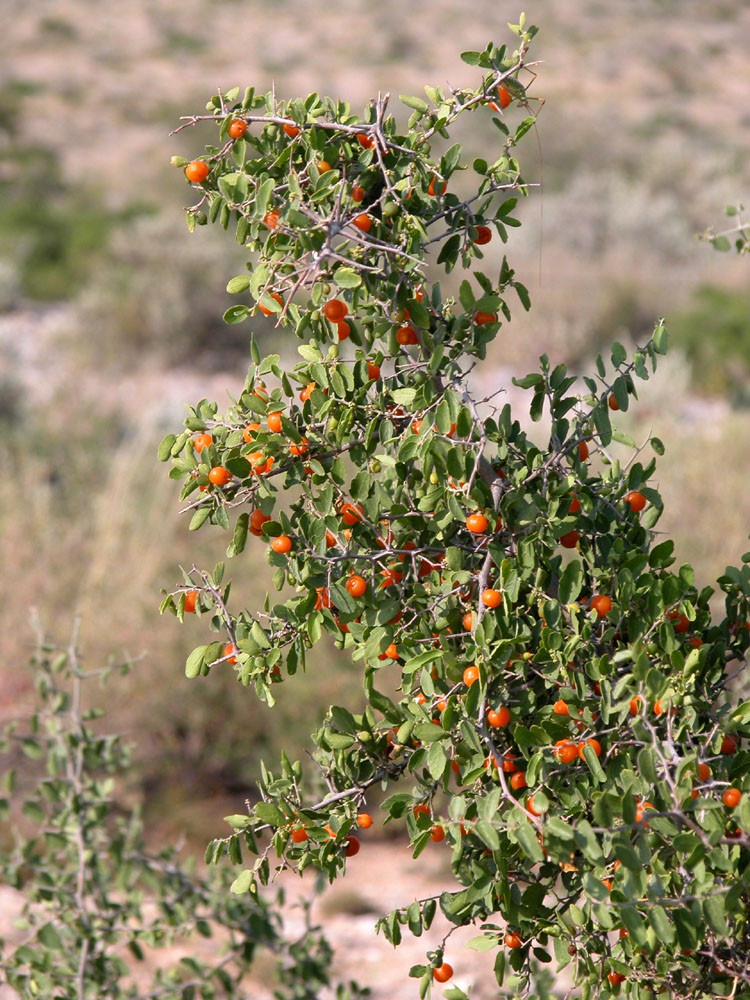
Desert hackberry shrub, also known as granjeňo or spiny hackberry. |
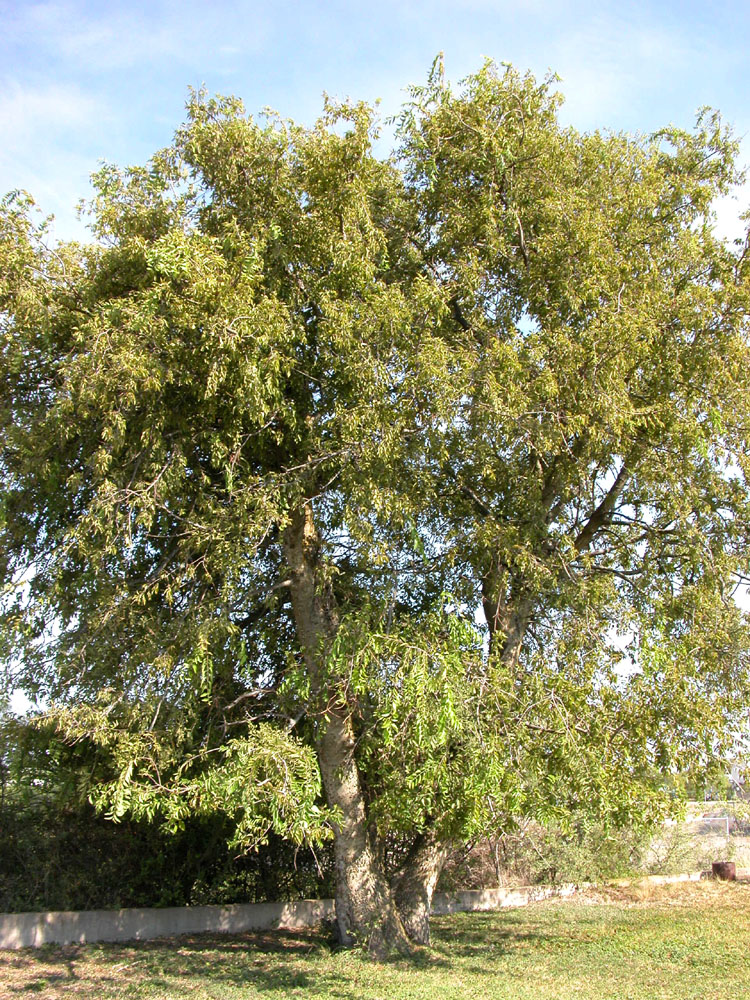
A large Sugarberry tree growing along a wall in a south Texas yard. |
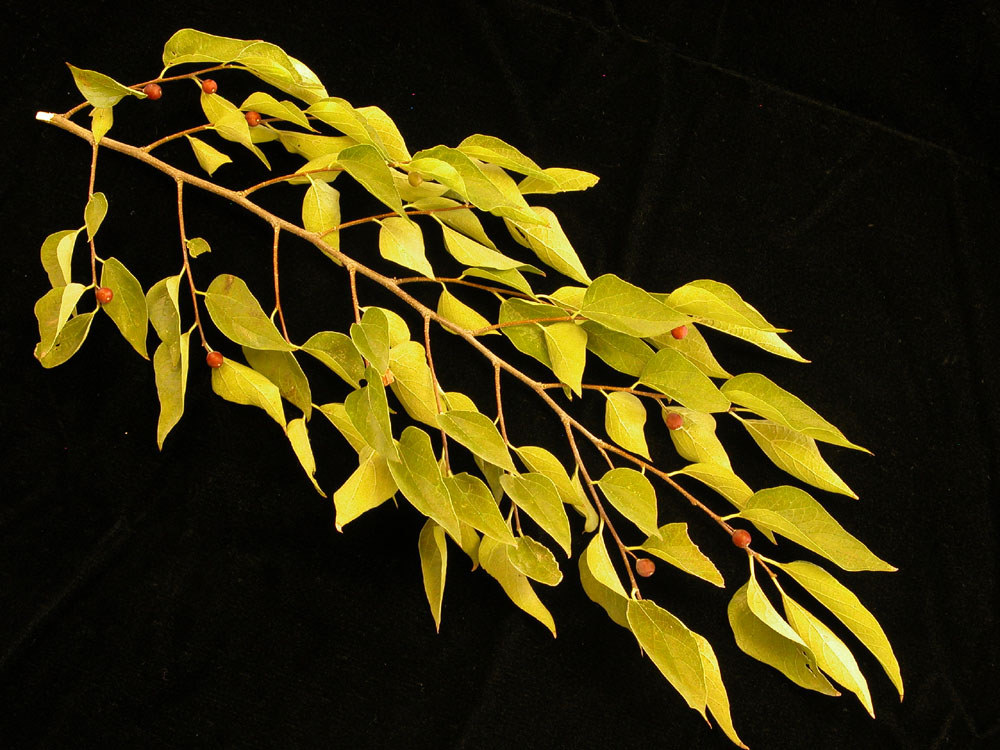
Branch of the sugarberry. |
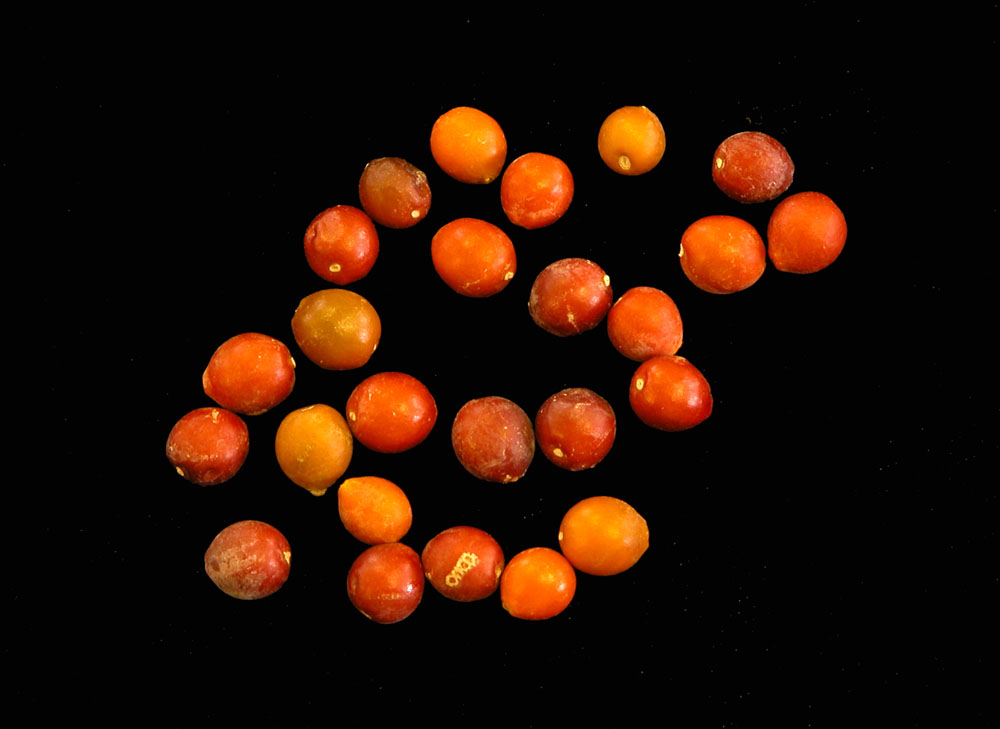
Sugarberries, like all hackberry fruits, are rich in sugar and calcium |
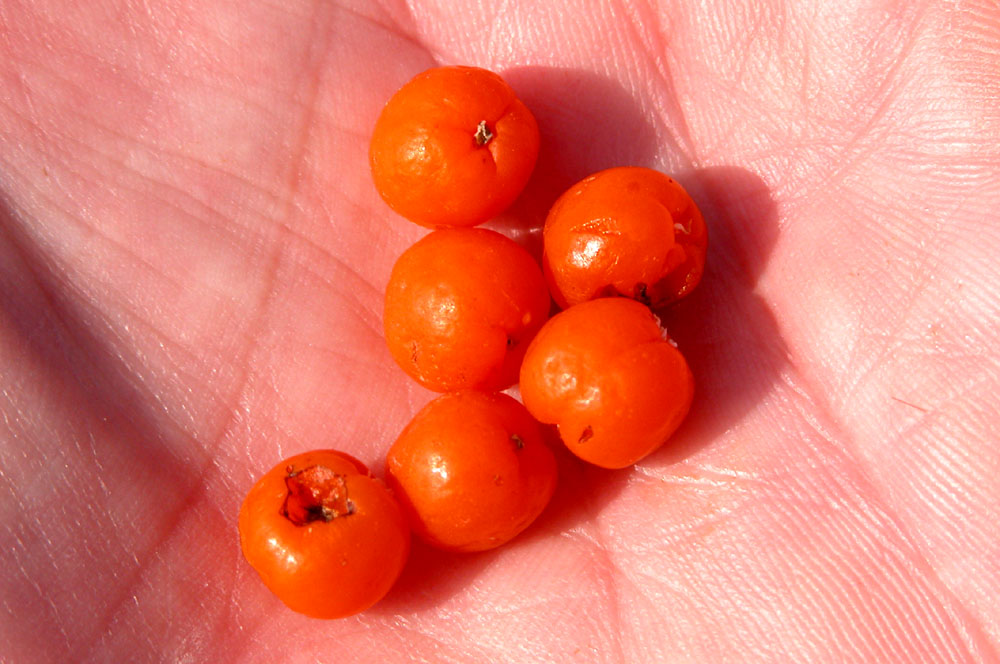
Fruits of the desert hackberry (granjeño) have a small crunchy seed. |